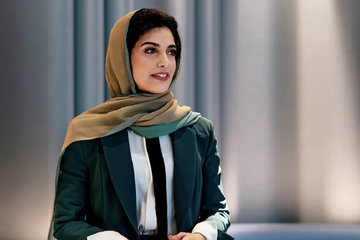
Saudi innovator, Sadeem Rashed Al-Marri has been honored by a regional visionary’s initiative launched by Sheikh Hamdan bin Mohammed Al-Maktoum, the crown prince of Dubai and chairman of the board of trustees of Dubai Future Foundation.
Al-Marri and her team were one of the winners within the Innovators Under 35 competition at the EmTech MENA emerging tech conference for using a 3D-printer to create a mechanical hand that can translate Arabic text entered in a mobile application into sign language. This particular device would have the potential to aid millions of deaf people in Arab regions and could also help to teach sign language.
Our second innovator is Sadeem Almarri, from Saudi Arabia, who is talking to us about designing a robotic hand for teaching Arabic sign language. #EmTechMENA pic.twitter.com/gY4iTcJubu
— EmTech MENA (@emtechmena) 24 septembre 2018
EmTech is an international event, founded in 1999, that is dedicated to emerging technologies and was held in Dubai for the first time in September this year. Hosted by the Dubai Future Foundation in collaboration with Haykal Media, the event attracted over 300 participants including scientists, industry experts, spokespersons and specialists involved in emerging technologies from around the world.
The innovators who had won awards for their initiatives showcased their inventions and spoke about their stories, visions and future aspirations.

Sadeem Rashed Al-Marri spoke to local news about her team’s invention and how it was part of four students’ graduation project at the College of Computer Information and Sciences in the Imam Mohammed Ibn Saudi Islamic University, entitled, “Designing a Robotic Hand for Arabic Sign Language Teaching and Translation.” The project’s participants were Ebtsam Aqeel Al-Shammari, Faten Abdulmajeed Al-Sunaid, Hessa Saad Al-Monif and Sadeem Al-Marri who were supervised by Dr. Maha Sulaiman Al-Rabiah.
That was such a wonderful, successful event, thank you @haykalmedia for give us this opportunity to meet great minds @emtechmena #EmTechMENA #iu35 pic.twitter.com/7QeNRtzS0I
— سديم المرِّي (@sadeemalmarri) 25 septembre 2018
Al-Marri spoke of the challenges that deaf and deaf-blind people face in trying to communicate with others and understanding their surroundings, “Although they use sign language or tactile sign language in an attempt to overcome their isolation, they experience difficulties connecting with their community because not all individuals are familiar with sign language or are comfortable with the tactile approach,” adding that her team attempted to help visually and sonically impaired people by designing and building a robotic hand that translates Arabic texts entered in the mobile application into the equivalent Arabic sign language alphabet gestures, that acts as a mean of communication for the deaf/deaf-blind.
The young Saudi scientist also explained that the idea for the invention came after watching a TV interview, “A deaf-blind person introduced the challenges that he was facing while communicating with others and understanding the people around him. During that interview, he said that although he used tactile sign language in an attempt to overcome his isolation, he experienced difficulties connecting with his community because not all individuals are familiar with sign language or are comfortable with the tactile approach,” she said.
At the @emtechmena one of the #innovatorsunder35 presentation. A robotic hand for Arabic sign language. Great initiative! #EmTechMENA pic.twitter.com/1PBHhDRYqQ
— Vera Futorjanski (@VeraFuture) 24 septembre 2018
Sadeem described the function and use of the invention, explaining that the robotic hand parts are printed using a 3D printer that are connected to servo-motors that act as the joints of hands and strings which simulate tendons, “When a user enters a word in the mobile application, a microprocessor sends the appropriate command to the servo-motors causing them to move to pull the attached strings and performing the corresponding sign language gesture,” Al-Marri explained, “It can be used as an effective 3-dimensional educational tool to teach Arabic Sign Language either for deaf or non-deaf people,” she said.
The team hopes to continue to enhance their product by eventually making it consist of both the left and right hands and to be able to perform the Arabic sign language, as well as being adaptable to any other global language.
Sadeem Rashed Al-Marri also told press that she is proud to be one of the young active Saudi women who are making a mark in education, technology, and business, and to be chosen by Google to work as a liaison between Google and her university and other organizations, “I was a member of different initiatives that targeted youth technology; in addition, I played a role in startups that worked in innovation and the manufacturing industry and I started my startup in the field of e-learning to contribute to raising student achievement and scientific performance to reach the highest level of his/her aspiring career position using the latest methods in education,” she stated.

















